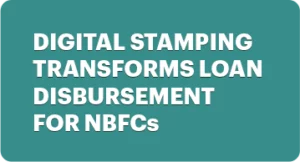Demystifying Differential Stamp Duty: A Comprehensive Guide
Stamp duty is an essential part of the financial landscape in India, serving as a significant source of revenue for state governments. Within the realm of stamp duty, the concept of “differential stamp duty” often raises questions and confusion. In this comprehensive guide, we will explore what differential stamp duty is, why it is levied, when it is payable, who is responsible for paying it, the consequences of non-payment, how differential stamp duty varies across Indian states, and practical aspects of calculating and paying it.
Understanding Differential Stamp Duty
What is Differential Stamp Duty?
Differential stamp duty, also known as variable stamp duty, refers to the practice of imposing varying rates or amounts of stamp duty on different types of legal documents or financial transactions. These variations are based on factors such as the type of document, its value, the location where it’s executed or used, and the parties involved. The primary purpose of differential stamp duty is to cater to the specific revenue needs and policies of different states and union territories within India.
Why is it Levied?
The primary reason for levying differential stamp duty is revenue generation. Stamp duty serves as a crucial source of income for state governments and union territories. The revenue generated from stamp duty is essential for funding various developmental projects, infrastructure development, and the provision of public services. By tailoring stamp duty rates to different circumstances, governments can optimize revenue collection.
When is it Payable?
Stamp duty, including differential stamp duty, is typically payable at the time of executing certain types of documents or entering into specific transactions. However, the timing of payment can vary depending on the nature of the document and the stamp duty regulations of the relevant state or union territory. In some cases, stamp duty may also be paid retrospectively, but this can lead to penalties and legal complications.
Who is Liable to Pay it?
The liability for paying differential stamp duty depends on the type of document or transaction. The responsible party is usually specified in the Stamp Act of the respective state or union territory. For example, in property transactions, the buyer is generally responsible for paying the stamp duty on the sale deed. However, it’s crucial to review the specific provisions of the Stamp Act applicable to your situation to determine the responsible party accurately.
Consequences of Not Paying Differential Stamp Duty
- Invalidation of Documents: Documents that are not properly stamped may be considered invalid or unenforceable in a court of law. This can lead to legal disputes and complications.
- Penalties and Fines: Many states impose penalties and fines for late payment or non-payment of stamp duty. These penalties can be substantial and can accumulate over time.
- Legal Proceedings: Governments may initiate legal proceedings to recover unpaid stamp duty. This can include seizing properties or assets to settle outstanding dues.
- Interest Charges: Some states charge interest on unpaid stamp duty, which can significantly increase the overall amount owed.
- Difficulty in Future Transactions: Non-payment of stamp duty can create obstacles in future transactions and may affect your creditworthiness.
Differential Stamp Duty Across Indian States
One of the unique aspects of the Indian stamp duty system is the variation in stamp duty rates across different states and union territories. This variation is primarily driven by the unique revenue requirements and policies of individual states. Here’s a closer look at this aspect:
State Autonomy
Stamp duty is a state subject under the Indian Constitution. This means that each state has the autonomy to determine its own stamp duty rates and policies. As a result, there can be significant disparities in stamp duty rates between states.
Revenue Generation
States use stamp duty as a crucial source of revenue. The rates are often calibrated to generate revenue while also considering the economic conditions, property market dynamics, and overall fiscal needs of the state.
Regional Differences
Stamp duty rates tend to reflect the regional disparities in property values and market dynamics. For example, property values in urban centers like Mumbai and Delhi are generally higher than in rural areas, leading to higher stamp duty rates in these cities.
Property Types
Stamp duty rates may vary depending on the type of property transaction. Residential property transactions may have different rates compared to commercial or industrial property transactions.
Periodic Revisions
State governments periodically revise stamp duty rates and policies to align with changing economic conditions and revenue requirements. These revisions are typically announced through budgetary measures.
Tax Planning
Buyers and sellers often consider the stamp duty implications when engaging in property transactions. This can influence the decision-making process and lead to variations in transaction patterns across states.
Compliance and Enforcement
States also invest in stamp duty collection infrastructure and enforcement mechanisms to ensure compliance. This includes the use of technology for property registration and stamp duty payment.
How to Calculate Differential Stamp Duty
Calculating differential stamp duty can be a complex process due to the multiple variables involved. Here’s a simplified process:
- Identify the Type of Document or Transaction: Determine the type of document or transaction for which stamp duty is payable.
- Refer to the Relevant Stamp Act: Identify and refer to the Stamp Act applicable to the state or union territory where the document is being executed or used.
- Check the Schedule of Rates and Exemptions: Within the Stamp Act, look for the schedule of stamp duty rates and exemptions. This schedule provides details on the applicable rates for different types of documents, their value thresholds, and any exemptions or concessions.
- Calculate the Stamp Duty: Based on the type of document, its value, and any other relevant factors, calculate the stamp duty using the rates specified in the schedule.
It’s advisable to seek professional guidance or use online calculators provided by government authorities to ensure accurate calculations, as the rules can be complex and subject to change.
How to Pay Differential Stamp Duty
Paying stamp duty, including differential stamp duty, typically involves the following steps:
- Purchase Non-Judicial Stamp Paper: Obtain the required amount of non-judicial stamp paper from authorized vendors. The denomination and value of the stamp paper should match the calculated stamp duty.
- Prepare the Document: Draft the document or instrument on the purchased stamp paper, ensuring that it adheres to the legal requirements.
- Affix the Stamp Paper: Affix the purchased stamp paper to the document in the designated area. Ensure that it is securely and permanently attached.
- Cancellation and Endorsement: Some states require the stamp paper to be canceled or endorsed by the authorized officer. This involves stamping the paper with official markings.
- Execution of the Document: Execute the document as per the legal requirements. This may involve signing and witnessing, depending on the type of document.
- Payment of Stamp Duty: Pay the calculated stamp duty at the designated government treasury or authorized bank. Ensure that you retain the receipt as proof of payment.
- Registration (If Required): Some documents, especially those related to property transactions, may require registration with the appropriate authority. Registration involves additional fees and compliance with registration laws.
- Retention of Stamped Document: Keep the stamped and executed document in a safe and accessible place, as it may be needed for legal purposes in the future.
MSB Docs eStamp Paper: Modernizing Stamp Duty Payment
In an era of digital transformation, MSB Docs eStamp Paper emerges as a modern solution for streamlined stamp duty payment. This innovative platform facilitates the payment of stamp duty electronically, eliminating the need for physical stamp paper in many regions. With MSB Docs eStamp Paper, users can calculate and pay stamp duty online, ensuring compliance with local regulations. This convenient, secure, and efficient method aligns with the evolving landscape of electronic documentation, offering a hassle-free experience for both individuals and businesses. Stay ahead in the digital age with MSB Docs eStamp Paper, making stamp duty payments more accessible and efficient than ever before.
Conclusion
In conclusion, differential stamp duty is a crucial aspect of the Indian taxation system, with its rates varying across states and union territories. It is levied to generate revenue for state governments and plays a significant role in funding public projects and services. Understanding the nuances of differential stamp duty, including when and how it should be paid, is essential to avoid legal complications and financial penalties.
Whether you are involved in property transactions, business agreements, or other legal documents, compliance with stamp duty regulations is paramount. Seek professional guidance when necessary, and always stay informed about the prevailing stamp duty rates and exemptions in your state or union territory. By adhering to these guidelines, you can ensure a smooth and legally compliant stamp duty process.
Now that you’ve demystified ‘Differential Stamp Duty: A Comprehensive Guide,’ are you ready to put this knowledge into action? Take the next step with MSB Docs. Request a demo or book your free trial today.
FAQs
1. Is the process of calculating stamp duty the same across all Indian states and union territories?
No, the process of calculating stamp duty can vary significantly from one state or union territory to another. Each state has its own Stamp Act and schedule of rates, so the applicable rates and rules can differ. It’s essential to refer to the specific Stamp Act of the relevant jurisdiction when calculating stamp duty.
2. Are there any concessions or exemptions available for certain types of documents or transactions?
Yes, many states provide concessions or exemptions for specific types of documents or transactions. These exemptions can vary widely and may apply to certain categories of individuals or organizations, such as first-time homebuyers, women, or charitable institutions. It’s crucial to check the Stamp Act and schedule of rates for any applicable exemptions in your state.
3. Can stamp duty be paid electronically, or is physical stamp paper always required?
In many states, stamp duty can be paid electronically through online platforms or e-stamping systems. Physical stamp paper is no longer mandatory for stamp duty payment in several regions. However, the availability of electronic payment methods may vary by state, so it’s advisable to check with the local authorities or government portals for the most up-to-date information on payment options.
4. What is the role of a notary in the stamping and execution of documents?
While a notary public plays a crucial role in verifying and authenticating documents, their involvement does not substitute for the payment of stamp duty. Stamp duty is a separate tax, and the document must be properly stamped as per the Stamp Act’s provisions. Notarization is often required for legal validity and can involve witnessing the signing of documents, but it does not replace the need for proper stamping.
5. Are there any penalties for underpaying stamp duty, even if unintentional?
Yes, there can be penalties for underpaying stamp duty, even if it was unintentional. Many states have provisions to penalize insufficient stamping or attempts to evade stamp duty. These penalties may include fines, interest charges, and legal consequences. It’s crucial to ensure accurate stamp duty calculation and payment to avoid such penalties.





